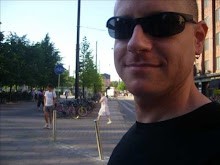When the Blue Jays were one of the frontrunners for---and in fact were widely expected to get---Yu Darvish, I wrote that their intention might have been to use Darvish in his familiar 6-man rotation to both make him comfortable and manage his workload while holding down the innings counts of their young pitchers Henderson Alvarez, Kyle Drabek and Brandon Morrow.
The Blue Jays missed out on the Japanese/Iranian righty and the Rangers eventually got Darvish.
After shifting Neftali Feliz into the starting rotation and signing Joe Nathan to take over as closer, the Rangers’ rotation appears set.
But their interest in Roy Oswalt lends another option into the mix along with questions as to why they need another established starter.
Could it be that the Rangers are also considering going with a 6-man rotation, but for different reasons?
Because the Rangers have gone so far against the new conventional orthodoxy of babying their starting pitchers and are telling them as they make their way up through the minor league system that six innings and 100 pitches (whichever comes first) aren’t going to cut it, they’ve been the subject of resistance from the Rick Petersons of the world who are invested in the “scientific” study of pitchers (along with selling their theories to information-hungry and desperate amateurs).
What would a team that specifically pushes their starters deeper into games have to do with a 6-man rotation?
If they implemented such a plan, the Rangers would be diminishing the workload of their pitchers in a different way than limiting their innings and pitches. The extra day of rest would allow the pitchers to go even deeper into games than the 7-8 innings and 120 pitches that are now seen as extreme. They’d be able to rest their bullpen periodically while not putting forth the perception of abusing their pitchers in some random experiment that has no basis in the hard (and ineffective) data that has led the Yankees to placing the likes of Joba Chamberlain in a plastic bubble and simultaneously destroying any chance he ever had of fulfilling his potential.
The Rangers, staffed by Hall of Fame former pitchers Nolan Ryan and Greg Maddux along with the highly respected pitching coach Mike Maddux, can look at a pitcher and use their own experiences to say, “his back leg is dragging”; “he’s not following through completely”; “his hips aren’t turning with the same force they were earlier in the game”; or “he’s not showing the same ferocity” and determine that the pitcher is tired because of fatigue, not because he’s reached a previously prescribed number that they pulled out of the air and are referencing a series of studies to justify their paranoia.
Thinking one is tired and being tired are two different things. If a pitcher knows beforehand that he’s only expected to put in a certain amount of work, that’s how his mind will focus and he might think he’s got nothing left when he does have something left.
Not everyone is a Roy Halladay and wants to finish what he starts.
As pitchers, Greg Maddux and Ryan weren’t babied and stayed out on the mound in good health and effectiveness to a remarkable degree.
This isn’t to suggest that the pitchers should be told to toughen up and stay out on the mound if they’re not feeling right---Greg Maddux was criticized late in his career for pulling himself out of games after a certain number of pitches---but it’s understanding what they’re looking at and taking into account everything that goes into throwing a baseball in a repeated and stressful manner every 5 (or 6) days.
These men are in a unique position to say what they’re doing and why without adherence to outsiders telling them they're wrong.
Shunning the armchair experts like Keith Law, who vomit scouting terminology and say things to make it sound as if they’re insiders when they’re only putting forth a pretense of such; or looking at the specious and self-indulgent reasoning behind writer Tom Verducci’s so-called “Verducci Effect” aren’t indicative of resistance to an ever-changing reality, it’s actual analysis without cowering amongst the masses in an effort to avoid criticism if it doesn’t work.
Calculating an individual on a chart, graph or by sputtering randomness because it sounds good and having the hypnotized sheep take every word said as gospel doesn’t make one an expert. For all of his down-home, country simplicity in a pleasant Southern drawl and known old-school Texas conservatism, Ryan was one of the first pitchers to lift weights; he paid close attention to his mechanics and was willing to listen to others like the late Angels coach Jimmy Reese, who showed him the value of vitamins and good nutrition. Ryan trusted his own instincts and understanding of his body and he’s transferred that to his work as an executive.
In certain circles, a 6-man rotation would be seen as a concession to the times. Some would probably twist it to validate themselves. But if the Rangers consider it, it will be because they have a method behind doing it and not because they want to place their pitchers in a sealed sarcophagus and protect them from the war of attrition known as pitching, preferring failure to the risk of injury and a misinformed public’s vitriol.

No comments:
Post a Comment